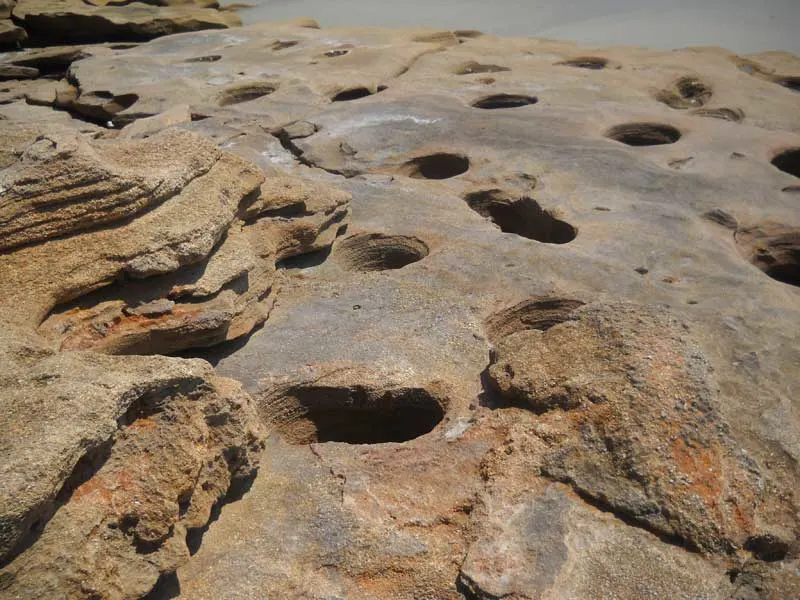Florida has miles and miles of beaches, but nothing quite like the Washington Oaks State Park beach, 12 miles north of Flagler Beach.
The beach at Washington Oaks Gardens State Park is full of swirling, sculptured rocks piled along the coquina beach, some sporting circular holes, others forming bowls that create tide pools for snails and anemones.
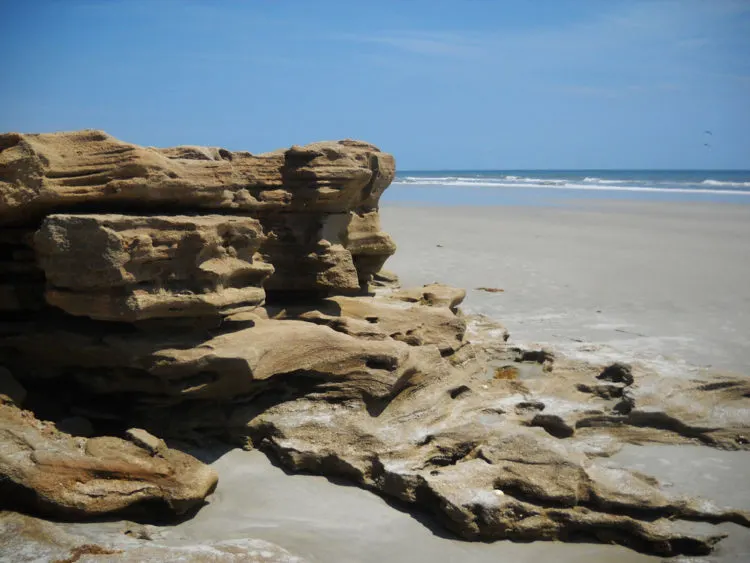
You might recognize coquina rock as the large picturesque stones often used in landscaping. Or you may associate it with St. Augustine’s Spanish fort, the Castillo San Marco, which is made of coquina.
Coquina is a soft rock made of ancient marine reefs and limestone and it is found in only few places – a few sites on the southern coast of the United State and in New Zealand. And Washington Oaks beach has the largest of the Atlantic Ocean outcroppings.
The beaches along Flagler County look like a giant container of cinnamon was sprinkled on them because of the orange specks of conquina that comprise the sand.
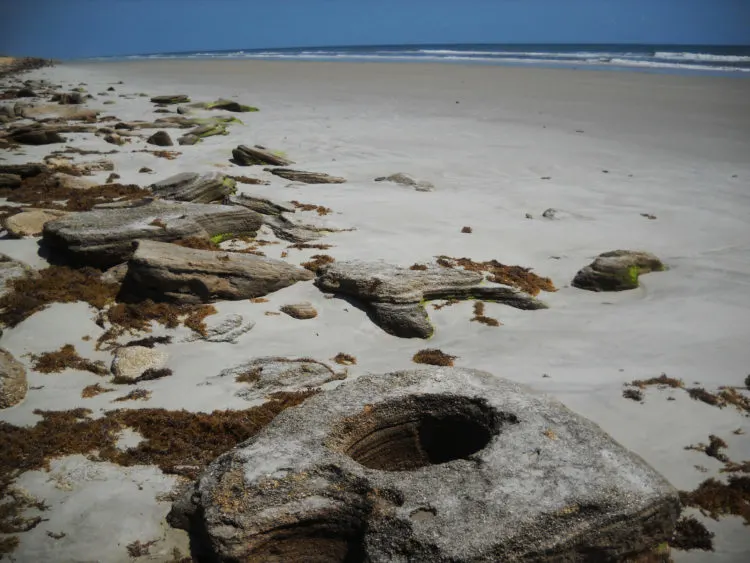
Washington Oaks Gardens State Park is located between the ocean and the Matanzas River midway between Daytona Beach and St. Augustine. As its name suggests, it features historic formal gardens. (Here’s more from Florida Rambler about the garden side of the park. )
Perhaps because the park has “gardens” it its name, visitors to the area sometimes overlook the spectacular Washington Oaks beach. It’s easy to do! There is barely a sign; the road to the beach references only the “Florida scrub” habitat adjoining the beach.
When you walk down to the Washington Oaks beach, you’ll first see some low outcroppings of coquina. Head north along the shore, and the rocks get larger and more fantastic.
The beach extends three-quarters of a mile. The rocks extend some distance north beyond the park’s borders and also crop up in the water. At high tide, the water crashing in the coquina rocks is a spectacular sight. At low tide, the coquina shapes create tide pools, and that’s the best time to appreciate the rocks.
You can swim at Washington Oaks State Park, but because of the rocks, this beach is better for exploring and wading than swimming. There are no lifeguards.
How coquina is formed
According to the National Park Service, the coquina rock you find at Washington Oaks Beach was formed by millions of tiny clams that died and accumulated for thousands fo years. These shells — tiny coquina clam donax variabilis — still live in the shallow waters along the coast. These are the small pink, lavender, yellow, or white shells one sees along the beach at the waterline, according to the NPS. Over time, the clams formed a submerged deposit of several feet thick. Eventually, water levels dropped, the deposits were exposed and rain dissolved some of the calcium in the shells, creating a chemical reaction that “glued” the shell fragments together.
Coquina is Spanish for “tiny shell.”
Video of waves crashing on coquina rocks at high tide:
Planning your visit to Washington Oaks State Park beach:
Washington Oaks Gardens State Park
6400 N. Oceanshore Blvd.
Palm Coast, Florida 32137
(386) 446-6780
Best asset: The coquina rocks are fantastic, and this is the largest outcropping of coquina on the Atlantic Ocean.
Parking: There’s a beach parking lot with about 30 spaces.
Fees: $5 per vehicle. Bring correct change for honor box.
Alcohol: No
Location and directions: To find the beach, take the park road marked “Florida scrub habitat,” which is directly off of scenic A1A heading east. It leads to the beach parking lot.
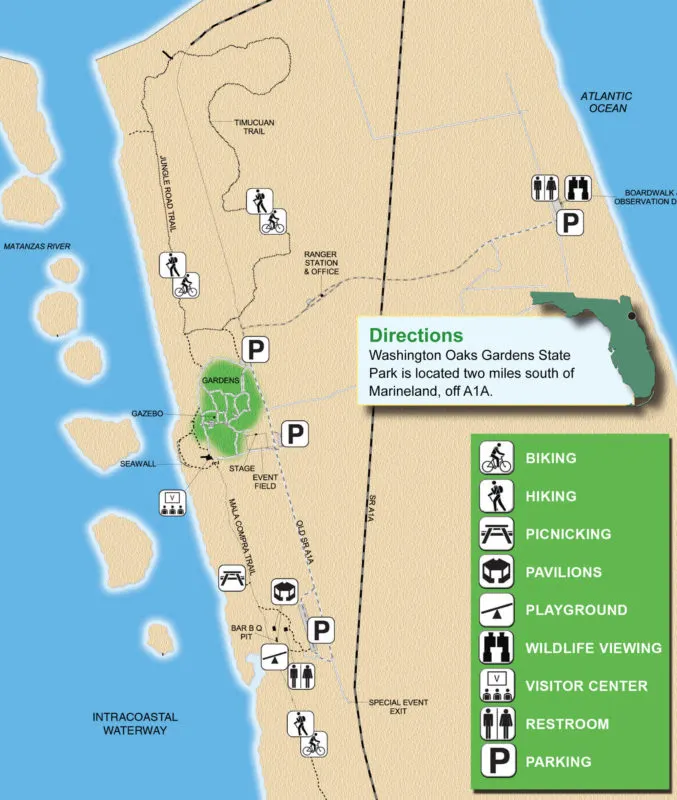
- Washington Oaks Gardens State Park official site
- Flagler Beach: Escape to real Florida beach town
- Princess Place: A magical place to explore for camping, hiking, history
- Ormond Beach Scenic Loop and Trail: Nearby scenic drive through woods and along beach
- Fort Matanzas, is a smaller Spanish fort built 50 years after St. Augustine’s Castillo de San Marcos. It’s a great stop because you take a small boat to the fort past spectacular scenery. And it’s free.
- Castillo de San Marcos, the fort in St. Augustine, is a must-visit in the area.
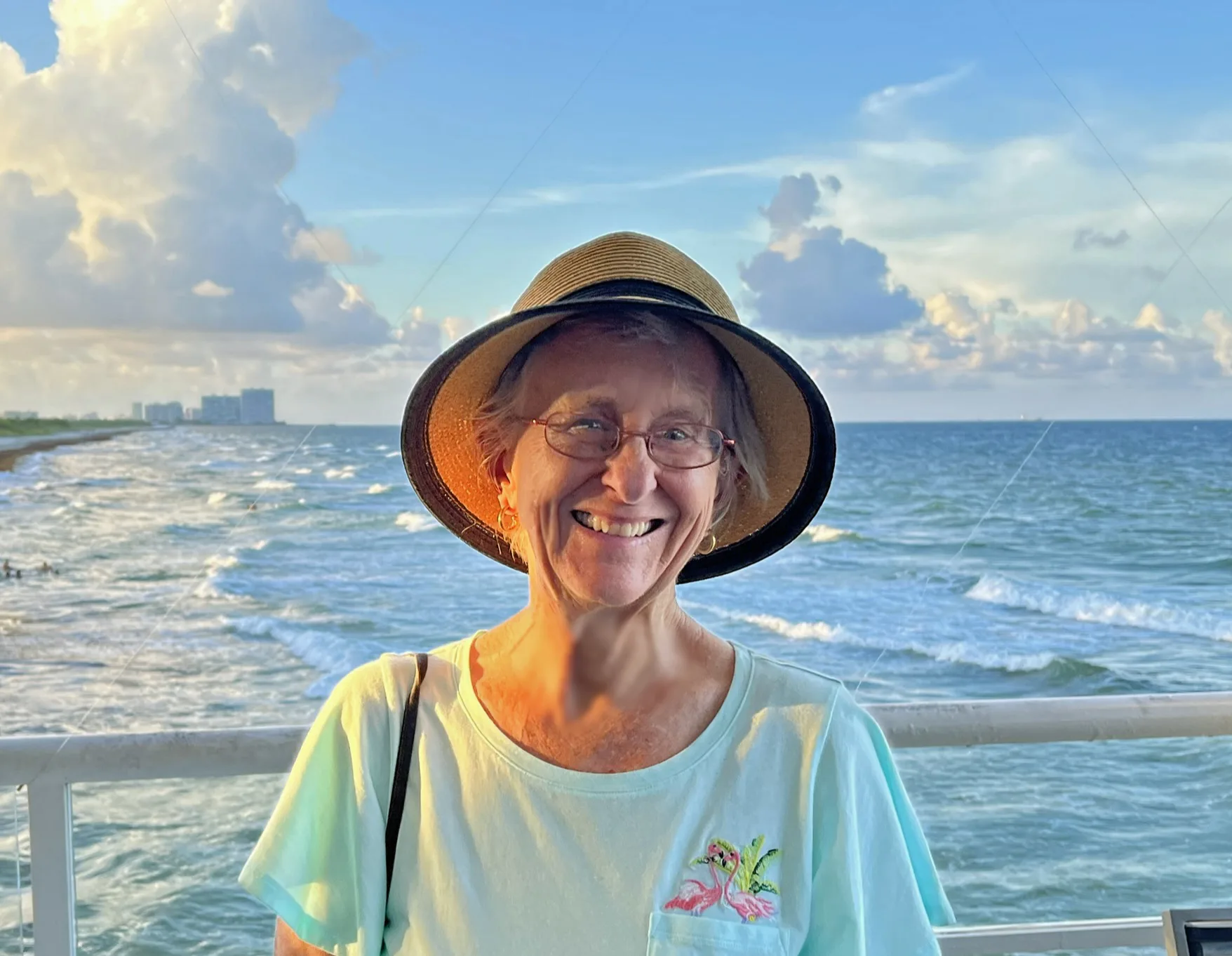
The author, Bonnie Gross, travels with her husband David Blasco, discovering off-the-beaten path places to hike, kayak, bike, swim and explore. Florida Rambler was founded in 2010 by Bonnie and fellow journalist Bob Rountree, two long-time Florida residents who have spent decades exploring the Florida outdoors. Their articles have been published in the Sun Sentinel, the Miami Herald, the Orlando Sentinel, The Guardian and Visit Florida.

